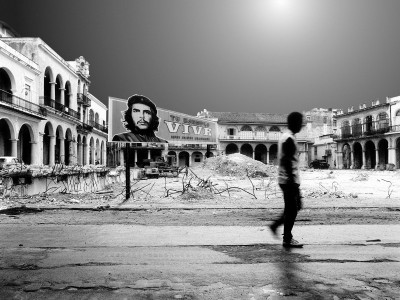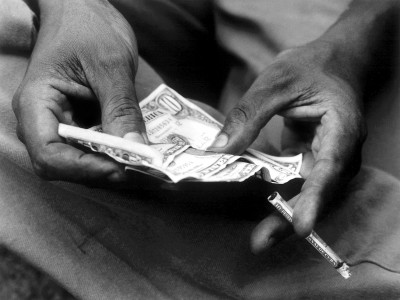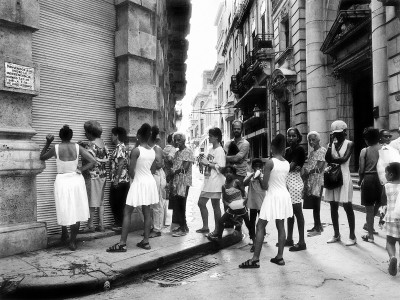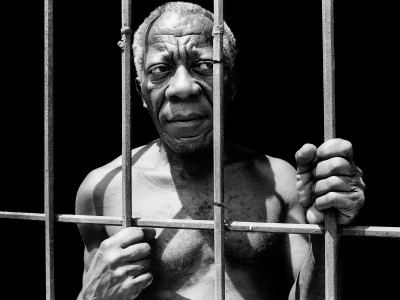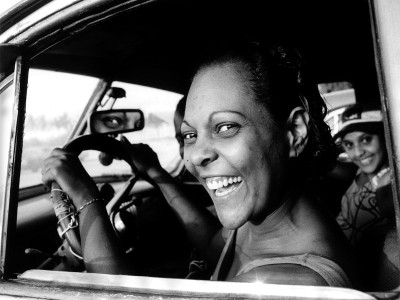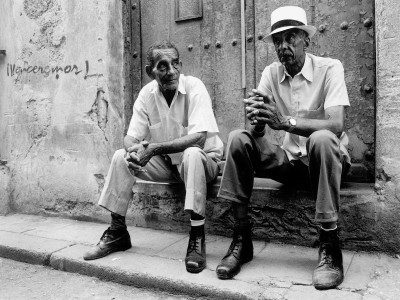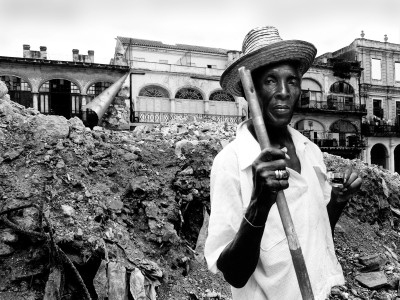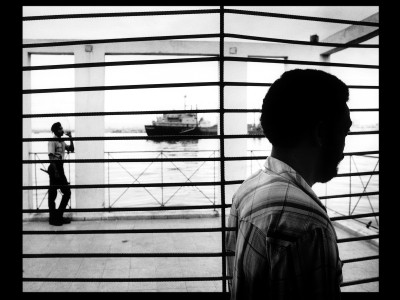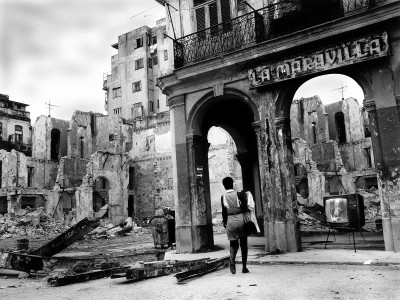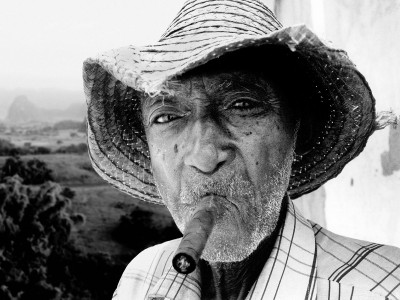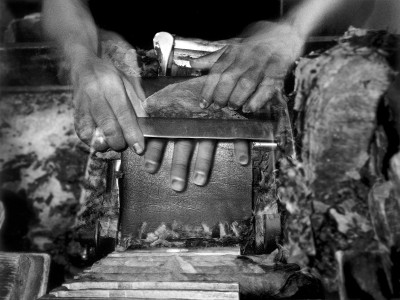¡viva fidel! a journey into absurdity
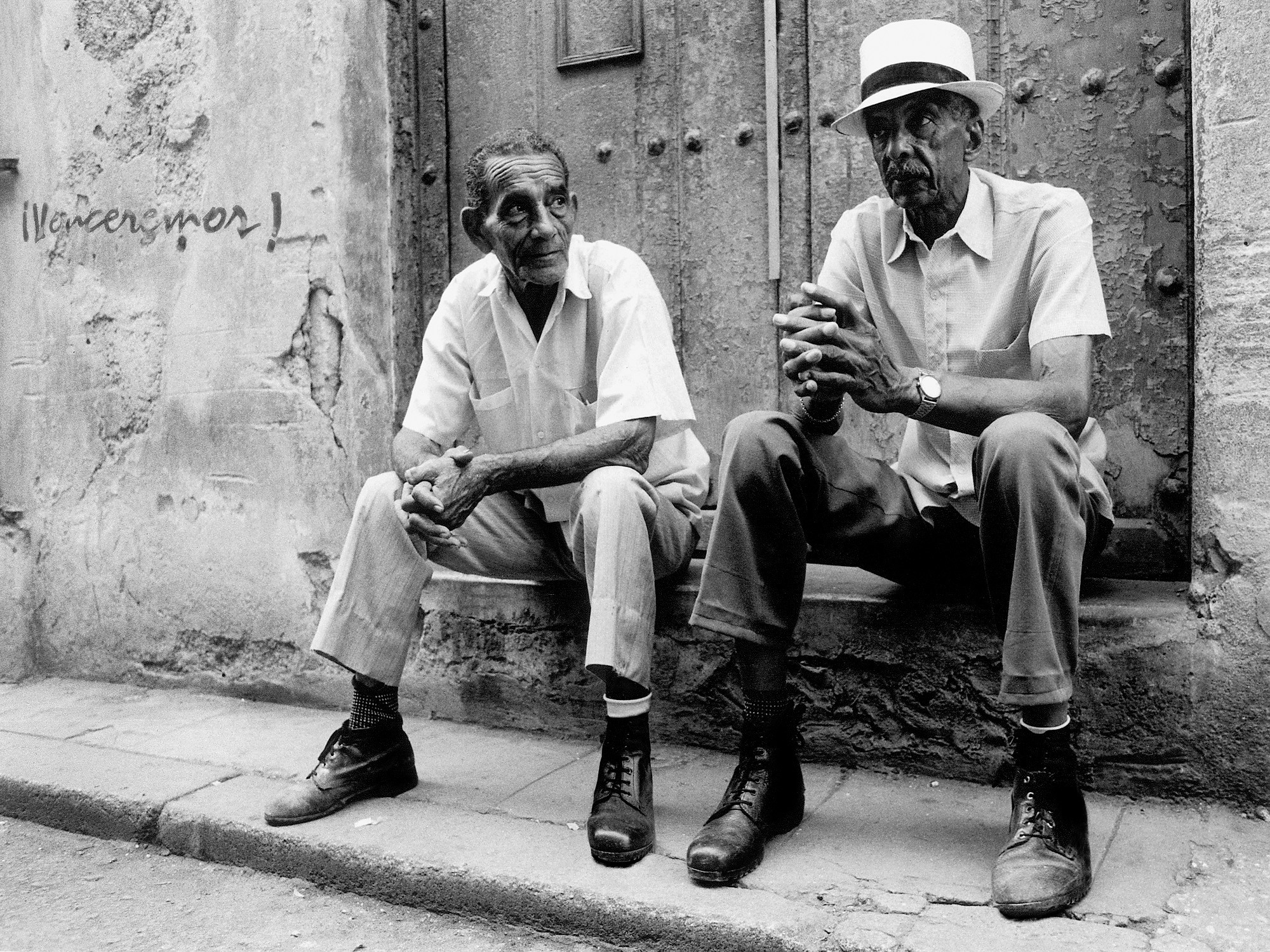
The work "¡viva fidel! - a journey into absurdity" (1997), investigates the aesthetic of possible change in the age of electronic image creation.
Traditional photography and its transformation by digital technologies is one approach with which we can inquire into the ways of perceiving documentary pictures and examine its supposed "authenticity." The project is based on analogue photographic material shot by Michael Najjar during an extentisive journey through Cuba in 1996. Later on the photographic material has been digitally modified. The alterations, however, only become apparent to the viewer on a second look.
At first glance the photos seem straightforward enough in content and appearance. It is the longer look that reveals elements that stand in clear contradiction to the viewer’s knowledge and received perceptions. The work leads to some elementary reflections about documentary photography: The idea of a photo being a genuine image of reality has in fact existed since the beginning of photography. With the rise of the new digital imaging processes the historic indexical relationship between the object and its photgraphic reference is being questioned.
We must not forget that the interpretation of a picture takes place in our heads. The meaning of what we see is never what we see but what it means to us. Pictures are not to concretize reality but to interpret. That is why the question is not about whether or not it is legitimate to manipulate documentary photos – but how.
The series comprises of 12 pictures and takes as its theme the social, economic and cultural status quo of Cuba in the year 1996. Cuba is the last existing socialist tropical paradise, anachronistic, absurd, dadaistic and surrealistic. The system’s only logic is that there is no logic at all. It is a country far removed from any rational comprehension.
As the Cuban painter Vicente Bonachea once said:
"The only thing Cubans take seriously is the absurd."
